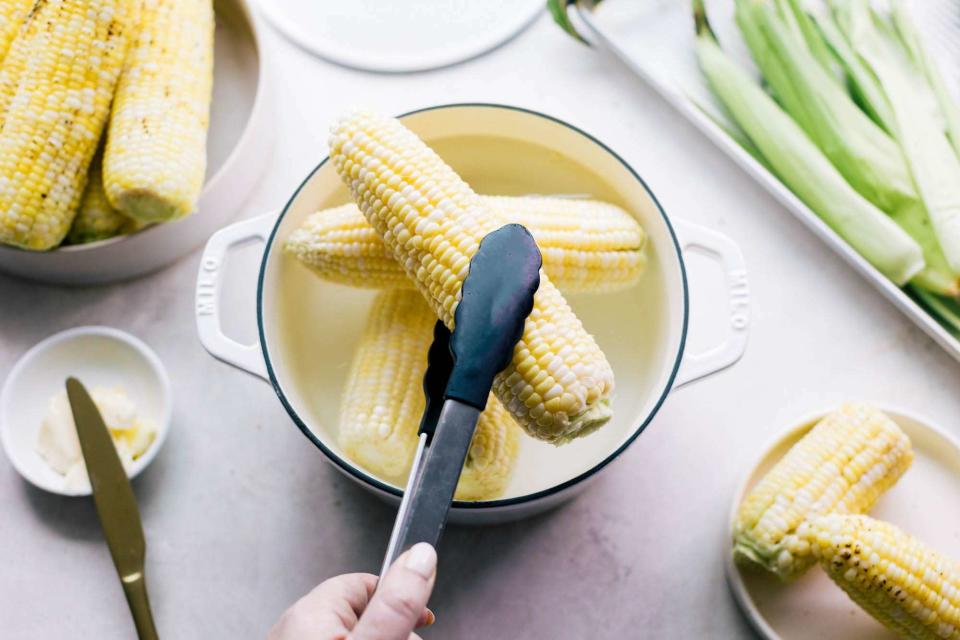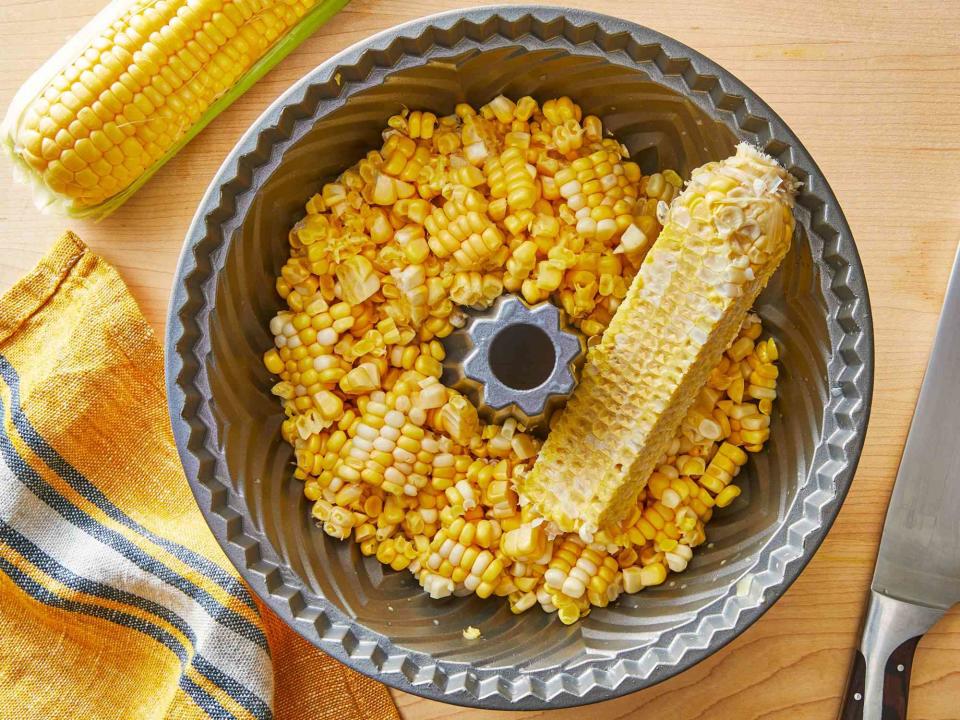How To Freeze Fresh Corn

TABLE OF CONTENTS
On This Page
Why You Should Blanch Corn
How to Blanch Corn on the Cob
How to Freeze Blanched Corn
How to Freeze Fresh, Unblanched Corn
Eating fresh sweet corn is one of the many joys of summertime in the South. Maybe you enjoy it boiled or grilled, slathered in melted butter and topped with herbs and seasonings, or you may like to stir fresh corn kernels into a pan of succotash or old-fashioned creamed corn.
Once you get fresh corn home from the market, it is important to refrigerate it immediately and use it as soon as possible. The longer an ear of corn sits, the more its natural sugars turn to starch, which means you lose a lot of that sweet, fresh taste.
If you don't cook your fresh-picked corn within a day or so, consider freezing corn, either on the cob or cut. That way you can enjoy the taste of summer even in the cold winter months. Here are three ways to freeze fresh corn.
Why You Should Blanch Corn
Blanching is the preferred method for freezing corn because it preserves the color and flavor of your produce by inactivating natural enzymes. (Blanching also is used to loosen the peel of tomatoes and peaches for easy removal.)
In the blanching process, fruits and vegetables are cooked in boiling water briefly, then plunged into an ice-cold water bath to stop the cooking process. Here's how to blanch your corn and prepare it for the freezer.
How to Blanch Corn on the Cob
Bring a pot filled with water to a rolling boil and add ears of corn, taking care not to crowd the pot.
Blanch for about 5 to 6 minutes, depending on the diameter of the corn. Blanching starts as soon as you drop the corn in the pot; you do not need to wait for the water to reach the boiling stage again.
Remove the cobs with tongs and immediately transfer them into a bowl or sink filled with ice water.
Once cooled, set the corn on paper towels, a cutting board, or a cooling rack and let dry.

Emily Laurae/Southern Living
How to Freeze Blanched Corn
Blanching also works to heighten and set the color and flavor when freezing produce and will help the corn maintain its texture. Once the corn is blanched, you can set to the work of freezing it either way you like:
Freeze whole ears of blanched corn
After blanching, make sure the cooled ears of corn are completely free of water droplets. Package them in zip-top plastic freezer bags, remove excess air, and store in freezer. Be sure to date the bag so you eat the oldest corn first.
Freeze cut kernels of blanched corn
It isn't as easy to cut kernels from thawed ears of corn, so if you want to "put up" blanched corn kernels to be used in skillet corn or corn pudding, cut the kernels off the cob before freezing.
To do this, stand the corn upright on a large cutting board or on the center of a Bundt pan. Using a sharp knife, cut straight down across the base of the kernels. Go back over the cob with the back side of the knife to extract the sweet corn "milk."
Get cup measurements as you package the kernels, noting the amount and the date you froze the corn on the zip-top plastic freezer bag. Place bags in the freezer in single layers to allow the corn to freeze completely. Once frozen, you can stack the bags to make the most of freezer storage space.

Photography: Caitlin Bensel; Food Styling: Torie Cox
Don't throw away those corncobs! There is still delicious flavor to be found, even once the corn kernels are gone. Make a pot of corn broth and use it in place of chicken or vegetable stock. If you don't have enough cobs to make a batch, just freeze them until you have more cobs.
How to Freeze Fresh, Unblanched Corn
If you're in a rush and don't mind a little extra cooking time when you plan to enjoy your corn, fresh corn will readily freeze right on the cob or in kernels.
Whole ears of corn
Many home cooks like the ease of simply shucking, silking, and packaging whole ears of corn for the freezer, and this is probably the easiest and quickest method to preserve your summer corn. Add shucked ears to appropriately-sized freezer bags, remove air, label, and freeze. Even frozen fresh ears taste better than store-bought frozen ears.

Emily Laurae/Southern Living
Cut kernels
If you want to freeze unblanched corn kernels follow the cutting and freezing directions for storing blanched corn kernels; just skip the blanching step.